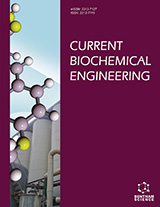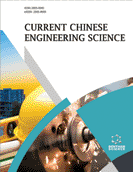Abstract
The Internet of Things (IoT) has been massively revolutionizing human lives
for the last few decades. The powerful and steady advancements in the field of science
and technology have aided this process immensely. As a result, almost all aspects of
our lives have grown smarter. Nowadays, life is almost unthinkable in the absence of
IoT-enabled smart devices, such as smart televisions, smart computers, smart-phones,
smart fitness trackers, etc. Needless to say, all these devices enjoy ever-growing
popularity in this era of smart technology. This development is propelled by the
existing digital communication backbone – the Internet. The very Internet, over which
human communication started just a few decades back, is now being used by each and
everything in our surroundings, be it natural or man-made. The advent and inclusion of
IoT in recent times have highlighted how trees, crops, fruits, chairs and tables,
electrical appliances, and all other objects around us can interact with each other. They
are capable of communicating as freely as humans, and based on such communications,
these things’ can even behave smartly, individually, and in unison, by making informed
decisions in real-time! Given that these things do not possess the gift of life naturally,
their ability to express themselves comes from the use of numerous types of sensing
devices, also called sensors. The intelligent manufacturing and easy availability of
these miniature, cost-effective sensing devices have given a new shape to almost all
aspects of our lives. The data regarding the behavior of things, as captured by sensors,
is essentially what the things express, and it carries meaning in the particular setting.
This data may then be processed and analyzed at the source, transmitted over the
internet and processed in a cloud or remote machine. While in some day-to-day
applications, the data is used directly for decision-making (for example, in smart
electric appliances), in more critical problems, the data needs ample processing and
analysis (healthcare, activity recognition, etc.). In the latter case, different mathematical
model-based machine learning algorithms are utilized to learn hidden patterns or
features in acquired data and extracted features. With the use of a trained learning
algorithm called a classifier, the new data is then used for decision-making purposes.
The choice of such algorithms is often dependent on the type of sensor data being used
and the corresponding application area. Thus, it is seen that IoT-based systems find
application in various domains, starting with research and development up to industry,
agriculture, defense, etc. In reality, the progress of researchers in different domains
leads to smart products that, in turn, make human lives easier. Research in several popular ular verticals, such as Human Activity Recognition, Remote Healthcare, Remote
Monitoring, Smart Automation, Smart Agriculture, etc., have yielded many such
products. This chapter focuses on the deep-seated relationship between IoT and sensors
from the perspective of state-of-the-art research. It offers discussions on the usage of
various types of sensing devices, associated data, and their contribution towards
solving specific research problems in the respective IoT-based applications. This
includes the Video Camera, Inertial Measurement Unit (IMU) Sensors, Ultrasonic
Sensors, Electrocardiogram (ECG) Sensors, Passive Infra-Red (PIR) Sensors,
Electromyogram (EMG) Sensors, and some commonly used sensing devices for
Environmental and Agricultural Smart system development. A pertinent case study is
also included to demonstrate the role of sensors in the development of IoT-based
systems. This study also highlights how little effort it takes to implement an IoT-based
data acquisition system. The different popular application areas are discussed thereafter
in terms of some broad categories. This is followed by the description of some of the
standard metrics used for evaluation and benchmarking the performance of smart
sensing systems. The future of sensing devices has been discussed, followed by the
pertinent challenges faced by IoT-enabled smart systems in implementation. Finally,
the concluding remarks are offered. The chapter aims to serve as a wholesome source
of knowledge, and relevant information to researchers and practitioners who wish to
indulge in the development of smart IoT enables sensing systems.
Keywords: Internet of things, Sensors, Smart applications, Sensor applications, IoT.






















